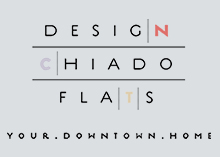On the process of elaboration and selection...

After the revealing moment in Switzerland back in 2002, described in the aforementioned text, other trips followed with the occurrence of the same problems
We remained convicted of the necessity of a publication of this kind, but because of professional and personal reasons the project remained in the drawer.
Only in 2006 did we decide to go ahead.
After an arduous research period (1), we reserved a few weeks to travel through Portugal, visiting and photographing hundreds of works.
We drove thousands of kilometers, got to know the country and its architectural reality very well.
The selection of works corresponds, for the guides’ organizational purpose, to a period bound in time. It seemed to make sense to perform a kind of check-up of the national architectural production, post-revolution of the 25th of April of 1974 (the beginning of democracy in Portugal).
If in the beginning of the project we had doubts about the quantity of material available, we rapidly became aware that we would have to divide the guide into two volumes. The criteria that defined the division of the guide was merely geographical. The first volume would focus on Porto and include the north and centre of the country; the second volume would be centered on Lisbon and include the southern region, Madeira and Azores. The edition of the second volume is expected for next year.
The selected works complied with quality criteria (2), most are public facilities for two reasons, on one hand, for their character of exception, on the other because can be easily visited both outside and inside the buildings. Some private works were also included, mainly residential, where the possibility of being visited from the outside was determinant (works that, regardless of their quality, are not close to a public access or are enclosed, were not included).
As a final balance of this project, we conclude that it was fundamental, even decisive, to our development as architects. We got to know unexpected places, people and works. After this experience we felt enlarged. This is the challenge we launched with the guide.
As it would be difficult to visit all the works in a period of only a few weeks, we recommend that you use selective criteria (essentially in the case of foreign visitors) and to always carry this guide in the glove compartment of your car, as it may prove to be handy during those little trips that we often have to take within the country.
Finally, if your interest is to be an architect or an appreciator of architecture, with a wider critical spirit and an enriched and refined intuition, then the use of this guide is compulsory.
Happy traveling!
(1)
We made an exhaustive research that intended to include all the national and international publications that promote architecture in Portugal.
Then, we entered into a more prolific media such as the internet, where we managed to discover some works by younger and less known architects. Finally, we did field work, which means we did not limit ourselves to go directly to the buildings that were selected but “wondered” through different districts and found some pleasant surprises (others not so much...). Despite all our efforts, it is possible that some works may have escaped our search, for which we apologize.
It should be mentioned that only finished works were selected and that some were removed from publication at the request of their authors. Those requests are based on problems (that all architects, unfortunately experience with greater or minor extent) of respect for the project during the construction of the work or later with their appropriation/inhabitancy.
(2)The selection of works complied with architectural quality criteria inherent to the authors of this guide. That quality is often hard to describe and more so to justify, as it is simultaneously analyzed in two prisms that can be antagonistic. On one side, we have the necessary theoretical rationality that is the basis of every architects training, on the other, we have the inevitable sensitive field. If one accounts for concrete elements and the design and constructive options, the second wanders through more abstract and personal elements. All of this, triggers inside each person unsuspected reactions that are difficult to explain. It may even result in something similar to what happens with music: does it move you or not? We believe that depending on the authors, the selection would most likely be different. This is however, with all the consequences that it may entail, our selection.
 Porto Tourism selected the Architectural Guide North and Centre of Portugal as the Official Guide of Porto
Porto Tourism selected the Architectural Guide North and Centre of Portugal as the Official Guide of Porto architectural itineraries
architectural itineraries Free App for Iphone / Iphone "ArchitecturalguidePortugal"_UPDATE
Free App for Iphone / Iphone "ArchitecturalguidePortugal"_UPDATE In 2012 was published the Architectural Guide - Rehabilitated Buildings and Spaces.
In 2012 was published the Architectural Guide - Rehabilitated Buildings and Spaces. Free App for Iphone / Iphone "ArchitecturalguidePortugal"
Free App for Iphone / Iphone "ArchitecturalguidePortugal" Architectural Guide | South and Islands of Portugal was published
Architectural Guide | South and Islands of Portugal was published Architectural Guide | North and Centre of Portugal was published
Architectural Guide | North and Centre of Portugal was published










